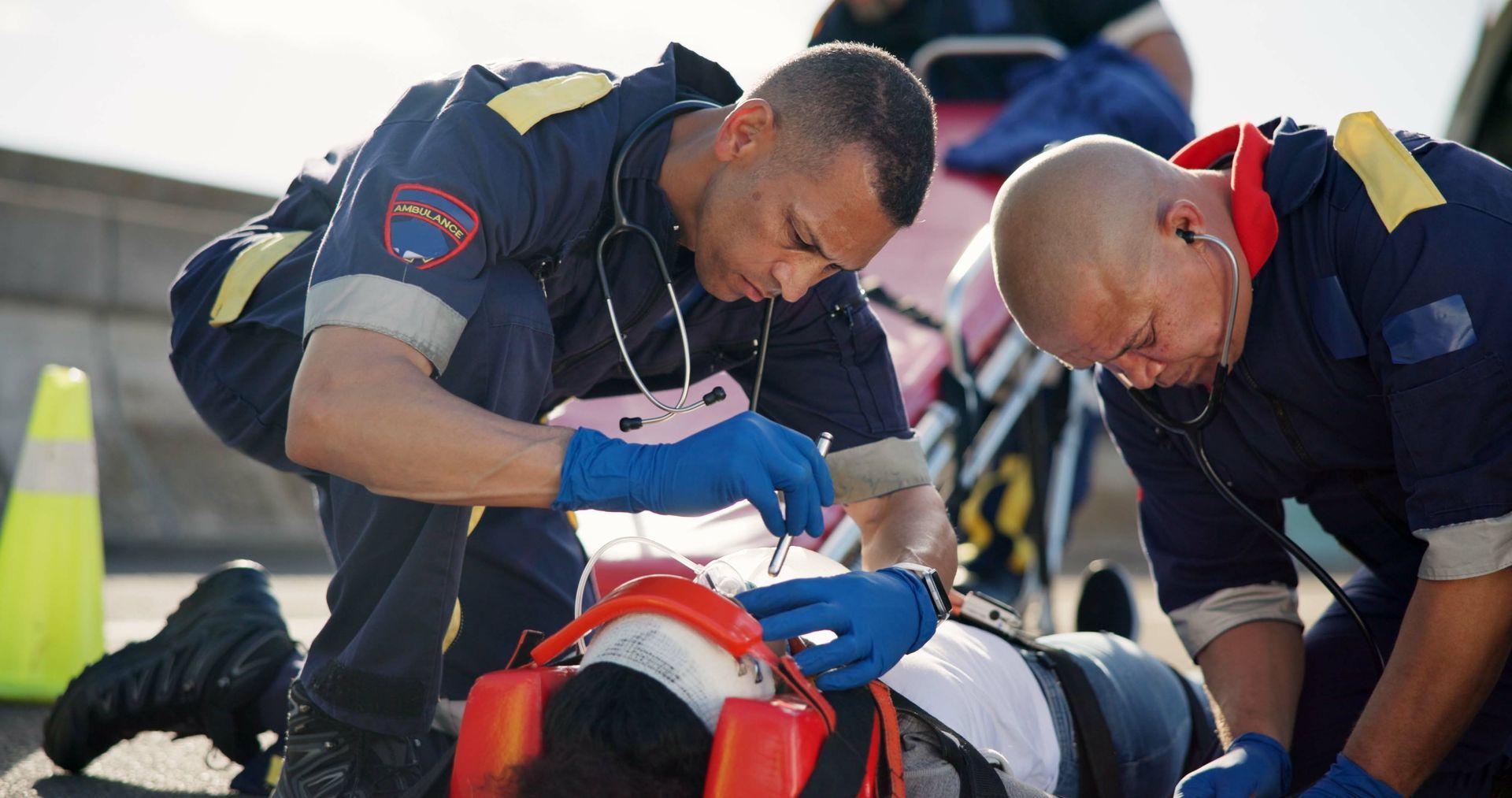Sentinel Events: How Hospitals Can Reduce Preventable Harm

A Wake-Up Call for Hospital Safety Leaders
In 2024, sentinel events surged by approximately 13%, with The Joint Commission (TJC) receiving 1,575 reports, up from 1,411 in 2023. These are not minor incidents — sentinel events include severe patient harm or death due to preventable errors, signaling serious lapses in care systems. While reporting is voluntary for most accredited hospitals, this data reflects alarming trends that demand urgent action.
Perhaps most concerning is that 49% of all reported sentinel events in 2024 were patient falls — a category that has nearly tripled in prevalence since 2019. Other top causes included wrong-patient or wrong-site surgery, delays in treatment, suicide events, and retained surgical items. Collectively, these account for 85% of sentinel events and most are linked to communication breakdowns and protocol lapses.
Hospitals today must not only respond to these incidents but also proactively prevent them through better systems, protocols, and culture. This article — grounded in 2024 Joint Commission data — explores the top trends, root causes, and compliance obligations, and provides actionable strategies for reducing harm.
What Are Sentinel Events — and Why They Matter
TJC defines a sentinel event as an unexpected occurrence involving death, permanent harm, or severe temporary harm. These are often “never events,” such as:
- Surgery on the wrong body part
- Retention of surgical instruments
- Patient suicide during hospitalization
- Infant abduction
- Fatal medication errors
These incidents do more than harm patients. They traumatize healthcare workers, trigger regulatory investigations, and damage institutional trust. TJC requires hospitals to conduct a root cause analysis (RCA) within 45 days and implement action plans — not only to comply with standards but to ensure such errors don’t happen again.
Sentinel Event Trends in 2024
Patient Falls: The Alarming Majority
In 2024, 776 of 1,575 sentinel events (49%) were due to patient falls. This represents a staggering increase from just 18% of events in 2019, indicating a widespread breakdown in inpatient fall prevention.
- 7% of 2024 fall events were fatal
- Most occurred in inpatient settings, especially among elderly patients
- Common injuries included brain trauma and hip fractures
Despite known best practices — like fall-risk assessments, bed alarms, and hourly rounding — execution gaps persist. The sheer volume of falls reflects a critical need to reinforce basic safety protocols.
Wrong-Site Surgery and Retained Objects
Wrong-site or wrong-patient surgeries made up 8% of events, with a 13% rise year-over-year. Notably:
- 68% were wrong-site procedures
- 85% of these errors caused serious harm
- Causes often included skipped “time-outs” and incorrect documentation
Retained surgical objects, especially sponges (34% of retained items), also increased to 119 cases — underscoring lapses in sponge/instrument counting protocols.
Delays in Treatment and Suicide Events
Delays in treatment accounted for another 8% of sentinel events, rising 56% from 2023. These delays often occurred when warning signs (like vital signs or lab results) were ignored or escalated too slowly. Alarmingly, 23% of sentinel event deaths were due to treatment delays.
Suicide-related events, also 8%, mainly occurred in behavioral health facilities or within 1–3 days post-discharge, indicating a gap in discharge planning and suicide risk follow-up.
Root Causes: Where Systems Break Down
Sentinel events are almost always preventable. Root cause analyses reveal that these incidents typically stem from four critical system failures.
1. Communication Failures
According to The Joint Commission, up to 80% of serious errors involve communication lapses — particularly during patient hand-offs, inter-shift reporting, or surgical time-outs. In 2024:
- Fall events often resulted from poor communication of fall-risk status
- Wrong-site surgeries occurred when concerns were raised but ignored
- Delays in treatment stemmed from missed escalation of abnormal results
2. Failure to Follow Protocols
When safety policies aren’t followed consistently, patients are left vulnerable:
- In falls, rounding was skipped or alarms turned off
- In wrong surgeries, teams rushed through or skipped verification
- In retained object events, surgical counts were incomplete
These are not knowledge gaps — they are execution failures caused by fatigue, distraction, or lack of enforcement.
3. Workload and Human Factors
Hospitals are high-pressure environments. Burnout, staffing shortages, and multi-tasking contribute to protocol lapses. TJC’s 2024 data cites task saturation, distraction, and poor supervision as frequent root causes.
4. Weak Safety Culture
Hospitals with poor safety cultures tend to ignore early warning signs. When team members feel unsafe to speak up — or when leadership fails to act on known risks — events that could have been prevented escalate into sentinel events.
Compliance Responsibilities: What Hospitals Must Do
When a sentinel event occurs, hospitals must act quickly and transparently.
Required Actions
- Immediate internal reporting to leadership and risk teams
- Root Cause Analysis (RCA) within 45 days
- Action Plan Implementation, with documented follow-through
Joint Commission Reporting
While voluntary, reporting to TJC can trigger consultative support, and shows a commitment to learning. Whether reported or not, the event and response must be disclosed during the next accreditation survey.
External Reporting
Some events must be reported to:
- State health departments
- CMS (especially “never events”)
- Malpractice insurers or Patient Safety Organizations
Failure to comply can jeopardize accreditation and funding, and erode community trust.
Strategies to Prevent Sentinel Events
Hospitals that reduce sentinel events invest in structured protocols, team communication, technology, and culture-building. Here’s how:
Reinforce Safety Protocols
Universal Protocol for Surgery: Mandatory time-outs, site markings, and team engagement reduce wrong-site errors
Fall Prevention Programs: Include hourly rounding, fall-risk alerts, non-slip socks, and caregiver education
Rapid Response Systems: Ensure quick action when patients decline
Medication Safety: Barcode scanning, double-checks for high-risk drugs, and alert configuration reduce errors
Improve Team Communication
Standardized Hand-offs: Use SBAR or I-PASS to convey critical information
Team Training: Programs like TeamSTEPPS improve assertiveness and clarity
Daily Huddles: Bring care teams together to flag risks before shifts
Patient Engagement: Use “teach-back” to confirm understanding and encourage patients to report concerns
Leverage Technology
Fall Prevention Alarms: Smart bed/chair sensors and video monitoring reduce unattended falls
EHR Alerts: Use decision-support tools to flag allergies, drug interactions, and missed labs
Data Analysis: Track near misses and incident trends to predict risks
Simulation Training: Use mock events to test team readiness and uncover weak spots
Build a Safety-First Culture
Just Culture Reporting: Encourage non-punitive reporting to identify risks
Leadership Walkrounds: Executives engaging with staff builds accountability
Staff Support Programs: Prevent burnout and offer help after traumatic events
Ongoing Education: Keep safety training fresh and aligned with the latest event data
Case Study Highlights
Memorial Hospital’s Fall Reduction Sprint
After a devastating fall event, Memorial implemented:
- Hourly rounding
- Alarm response assignments
- Family education
Outcome: A 30% reduction in falls over 3 months, and zero major injuries for 6 months. Leadership attention and daily huddles were key to sustaining engagement.
Surgical Center’s “Marker & Pause” Protocol
Following near misses, a surgical center launched:
- Surgeon-led site markings
- Hard-stop time-outs
- Verbal confirmation from all team members
Outcome: Zero wrong-site surgeries in five years, across thousands of cases. The secret: team empowerment and redundancy.
What’s Ahead: Joint Commission Priorities for 2025
Based on 2024 trends, The Joint Commission is expected to increase focus on:
Fall Prevention: Already flagged by ECRI as a top safety concern
Surgical Safety Tech: Adoption of RFID tags, AI plan verification, and OR video audits
Diagnostic Delays: Tools to catch sepsis, stroke, and patient deterioration sooner
Suicide Prevention: Ligature risk protocols, discharge planning, and behavioral health follow-up
High-Reliability Practices: Promoting a “zero harm” culture at the board and executive level
Hospitals must align with these priorities by investing in internal safety learning systems, proactive reporting, and continuous improvement frameworks.
Frequently Asked Questions
What is considered a sentinel event in a hospital?
A sentinel event is a serious, preventable adverse event that results in death, permanent harm, or severe temporary harm to a patient. Examples include wrong-site surgery, patient suicide in care,
fatal medication errors, and retained surgical instruments.
Are sentinel events the same as “never events”?
Not exactly. Never events are a defined list of 29 preventable incidents from the National Quality Forum. Most never events are also sentinel events, but The Joint Commission’s definition is broader and tied directly to accreditation compliance.
What are a hospital’s reporting requirements for a sentinel event?
Hospitals must internally report the event, conduct a Root Cause Analysis within 45 days, and implement a corrective action plan. Reporting to The Joint Commission is voluntary but strongly encouraged. Some events must be reported to state or federal agencies.
What is a sentinel event root cause analysis (RCA)?
An RCA is a structured process to determine what went wrong and why, aiming to uncover system failures rather than individual blame. The goal is to create an action plan that prevents recurrence through training, policy changes, or other safety improvements.
How can hospitals reduce the risk of sentinel events?
Hospitals can reduce sentinel events by ensuring strict protocol adherence, improving hand-off communication, using safety technology appropriately, and fostering a culture where staff feel empowered to speak up about safety risks.
Sentinel events are devastating but preventable. The 2024 data reinforces that most serious harm stems not from rare anomalies but from common system failures — miscommunication, skipped steps, and workload pressure. Hospitals must recommit to a proactive safety culture built on data, diligence, and accountability.
At Frischman & Rizza, we support healthcare organizations at every stage — from policy assessments to post-event analysis and regulatory guidance. We’ve helped hospitals reduce sentinel events and strengthen their Joint Commission readiness through practical, evidence-based strategies.
If your hospital is ready to move from reactive fixes to proactive safety, we’re ready to help. Let’s build a system where “never events” truly become never events.
Resources Cited





